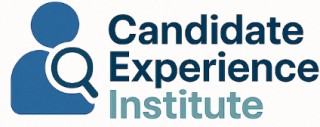Understanding Workplace-Based Evaluations
Grasping the Essence of Workplace Assessments
Workplace-based evaluations are an invaluable component in the recruitment process, offering a firsthand glimpse of how candidates perform in real-world scenarios. These assessment tools provide critical insights beyond what resumes and interviews can convey. Through direct observation, candidates are assessed on both professional skills and interpersonal dynamics within a workplace setting.
The importance of case-based discussions and mini clinical evaluations lies in their ability to simulate real-life challenges. By placing candidates in environments similar to those they would encounter in their prospective roles, employers can evaluate their performance, decision-making abilities, and adaptability. This approach is particularly relevant in sectors like medical education, where handling clinical situations effectively is paramount.
The growth of international medical graduates entering the workforce underscores the need to verify competencies through multisource feedback and other structured evaluation exercises. These based discussions are not just about gauging procedural skills; they also focus on the candidate's ability to integrate into team dynamics and adhere to best practices learned during training.
For a deeper dive into designing assessments that cater effectively to candidate experience, you can explore essential questions for effective skip-level meetings here.
The Impact on Candidate Experience
Influence of Workplace-Based Evaluations on Job Applicants
In the realm of recruitment and selection, workplace-based evaluations (WPBEs) are gaining prominence for providing insights that are both practical and impactful on candidate experience. Particularly within fields demanding rigorous practical skills, such as medical education, these assessments stand crucial. Candidates, or trainees, benefit from opportunities to demonstrate procedural skills and clinical acumen through direct observation—a method which can enhance their engagement and motivation.
The effective use of WPBEs involves a variety of assessment tools and methods. Tools like mini clinical evaluations (mini cex) and observation procedural assessments or WBA offer structured ways to assess candidate performance in real-world settings. These methodologies not only evaluate skills but also foster an environment of learning and improvement, enhancing the overall candidate journey.
Another aspect of WPBEs affecting candidate experience is the incorporation of multisource feedback. Receiving insights from different perspectives such as educational supervisors, colleagues, and even patients can enrich the feedback mechanism for the candidates. This multisource feedback can encourage reflective learning and skills enhancement, positively impacting the overall experience candidates have during the evaluation exercises.
Furthermore, case-based discussion and direct observation in WPBEs encourage trainees to engage in self-directed learning and apply theoretical knowledge to practical scenarios. This interactive approach helps bridge the gap between academic learning and its application in real workplace settings, creating an enriching experience for international medical graduates and others in performance-driven roles.
For more in-depth consideration on how these assessments contribute to and sometimes accidentally detract from candidate satisfaction, understanding the potential
impact of interviewer mistakes provides valuable insights.
Designing Effective Evaluations
Crafting Evaluations that Enhance Engagement
Designing effective workplace-based assessments (WPBAs) is pivotal in enhancing the candidate experience, particularly in settings like medical education. At the heart of these evaluations is the emphasis on authentic, real-world scenarios that test practical skills. By focusing on direct observation in clinical settings, candidates experience assessments that are relevant and beneficial.
One key approach is implementing mini clinical evaluations, or mini-CEX, which offer rich insights into a candidate’s performance in specific clinical scenarios. This method provides a structured yet flexible framework to assess procedural skills through direct interaction with patients. The feedback derived from these assessments is instrumental for trainees, allowing them to refine their skills incrementally based on real-time experiences.
Moreover, incorporating multisource feedback ensures a comprehensive evaluation of the trainee’s capabilities. By soliciting input from various professionals within the workplace, including peers, educational supervisors, and patients, a holistic view of the candidate’s abilities is formed. This not only aids in skills development but also enhances educational engagement, as trainees receive a well-rounded assessment of their performance.
Clinical evaluations should also include case-based discussions. These assessments facilitate deeper understanding and application of theoretical knowledge to practice, thereby improving critical thinking and decision-making skills in patient care scenarios. The role of the educational supervisor in guiding these discussions cannot be overemphasized, as they provide valuable mentorship and insights into the candidate’s learning progress.
Training programs must ensure that evaluation exercises are designed with the intent to promote learning and development. By aligning assessment tools with the outcomes expected from international medical graduates, training can be tailored to meet benchmarks consistent with global standards.
For those looking to craft effective peer interview questions that augment workplace-based evaluations, valuable insights can be sourced from this
expert guide on designing evaluation exercises. Understanding the nuances of crafting questions that delve into core skills and attributes can significantly enhance the efficacy of WPBAs.
Feedback Mechanisms
Ensuring Constructive Feedback during Evaluations
Feedback mechanisms are a cornerstone in enhancing candidate experience during workplace-based evaluations. They bridge the gap between learning and performance, especially in settings where clinical and procedural skills are critical. Effective feedback not only supports the trainee's educational journey but also enhances their emotional engagement and motivation.
Constructive and timely feedback helps trainees integrate their learning experiences and apply them to real-world scenarios. Medical graduates, for instance, benefit from immediate feedback following direct observation and mini clinical evaluations, which can significantly impact their skill development and confidence. Similarly, feedback based on observation procedural skills allows for individualized improvement plans.
To optimize candidate experience, feedback should be multidimensional, encompassing direct supervisor observations and multisource feedback from colleagues and patients. This approach caters to a holistic development in workplace-based assessments (WBA) and case-based discussions. By offering comprehensive insights, trainees can better understand their strengths and areas for improvement.
Feedback mechanisms can include structured evaluation exercises such as the mini-CEX and direct observation assessments. These tools not only focus on current performance but also highlight future learning opportunities. Additionally, assessment methods should encourage active trainee participation, fostering self-reflection and personal goal setting.
It's essential for educational supervisors to tailor their feedback to be specific, actionable, and linked to prior performance and projected outcomes. Consistent and regular feedback contributes to a positive candidate experience, nurturing both personal and professional growth.
Challenges and Solutions
Hurdles in Implementing Practical Evaluation Methods
Incorporating workplace-based assessments into the hiring process for fresh medical graduates or trainees can present several challenges. One of the primary issues faced is ensuring consistency across various evaluators and settings. Due to the subjective nature of observation-based methods, there can be significant variability in the scores and feedback provided. This inconsistency can affect the reliability and fairness of the performance assessment.
Another obstacle is the need for proper training of evaluators. Whether they are clinical supervisors or educational supervisors, thorough training is essential to ensure that assessments such as the mini clinical evaluation exercise (mini CEX) or observation procedural skills are conducted effectively. Ensuring that these evaluators have a deep understanding of assessment tools and methods allows for more accurate and constructive feedback, which is vital for a positive candidate experience.
Time constraints also pose a significant barrier. Clinical evaluations, especially in busy medical settings, require a dedicated amount of time which can impact both the assessors and the candidates. Furthermore, logistical challenges, like coordinating multisource feedback sessions or case-based discussions, may hinder the completion of the full evaluation exercise in a timely manner.
Addressing and Overcoming the Challenges
Despite these challenges, solutions can be implemented to enhance the effectiveness of workplace-based assessments. To improve consistency, institutions may adopt standardized assessment tools that have been cross-verified through platforms like PubMed and Crossref. In addition, utilizing various types of assessments, such as mini WBA or medical education tools, can help triangulate data and provide a comprehensive view of a candidate's skills.
Another solution is investing in proper training programs for educational supervisors and evaluators. This ensures everyone involved in the evaluation exercise has the skills needed to provide accurate and fair assessments. Regular workshops or online training sessions can keep evaluators updated on best practices in workplace and clinical performance evaluation.
Efficient feedback mechanisms are vital for continuous improvement. Establishing clear lines of communication can lead to improved performance and candidate experience. Leveraging modern educational technologies can also streamline feedback collection and dissemination, reducing time constraints and enhancing the overall learning experience for medical trainees.
Finally, addressing the logistical challenges involves creating a flexible evaluation schedule that accommodates the busy nature of medical settings. Pre-planning and effectively utilizing digital platforms for assessments can support this process, ensuring that evaluations are carried out smoothly and efficiently, ultimately improving candidate experience.
Future Trends in Candidate Experience
Anticipating the Evolution of Candidate Experiences
Looking forward, the landscape of candidate experiences is set to evolve, particularly with the integration of more advanced assessment tools and methodologies. As organizations grow to appreciate the significance of workplace-based evaluations (WPBAs), there is an increasing trend towards incorporating these assessments into candidate evaluation processes. This shift is particularly evident within areas like medical education, where tools such as the mini clinical evaluation (mini CEX) are being more widely adopted.
The future calls for more streamlined and holistic approaches to evaluations. Technologies such as artificial intelligence and machine learning are poised to play crucial roles, allowing for more precise performance and skills assessments. This will be particularly beneficial in scenarios where direct observation of procedural skills is challenging, enhancing the reliability and validity of workplace-based evaluations.
Personalization and Flexibility
One significant trend is the customization of assessment experiences. Companies aim to transform evaluations into more personalized journeys, acknowledging the unique backgrounds of medical graduates and trainees. Emphasizing flexibility, organizations are likely to adopt a blend of assessment methods including simulation-based exercises and case-based discussions. Such approaches aim to cater specifically to the strengths and developmental needs of individual candidates.
The Role of Feedback in Development
Going forward, there is an anticipated increase in the integration of enhanced feedback mechanisms within candidate evaluations. Educational supervisors and evaluators will leverage more sophisticated feedback tools, fostering a learning environment that supports continuous development for trainees. Multisource feedback systems can also provide a broader perspective on performance, aiding candidates in refining both clinical and procedural skills.
Integration of International Standards
With the growing globalization of work environments, assessment practices are expected to align more closely with international standards and guidelines from sources such as PubMed and Crossref. Ensuring consistency and comparability of evaluations across borders will likely be a priority, especially in sectors like international medical training and education.
The future of candidate experiences is not just about adapting to new assessment methods but also about fostering an environment of continuous improvement and engagement. By cultivating a robust framework for workplace-based learning and embracing innovative tools, organizations can ensure that their evaluation practices support meaningful growth and development among candidates.














